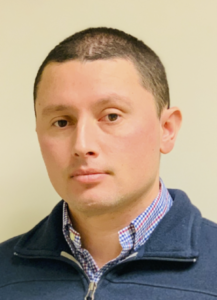 |
| Dr. Gallego-Perez is an Associate Professor in the Departments of Biomedical Engineering and General Surgery at The Ohio State University (OSU). He was also recently appointed as the Edgar C. Hendrickson Chair in Biomedical Engineering, the Director of the Advanced Nanotherapeutics Center within the Gene Therapy Institute at OSU (2023), and a Faculty Fellow within the Enterprise for Research, Innovation and Knowledge (ERIK) at OSU. His lab’s research is aimed at developing nanotechnology-driven platforms (e.g., devices, methods, approaches, systems) for both fundamental and translational biomedical research. A major portion of his research has been devoted to using nanotechnology to induce controlled lineage conversions, in vivo, as a potential therapeutic approach for different conditions. Such efforts were highlighted in 2019 in the NIH Director’s Blog. Dr. Gallego-Perez is currently supervising a number of projects in which this approach is being tested within the context of diabetes, peripheral nerve injury, chronic brain injury, Alzheimer’s disease and related dementias, and cancer. In addition to high impact publications, this line of research has yielded multiple intellectual property filings and awarded patents, several of which have already been licensed to industry. Dr. Gallego-Perez is the lead inventor of the Tissue Nano-Transfection (TNT) technology, for which he was awarded the NIH Director’s New Innovator Award to work on developing TNT-driven therapies for ischemic stroke and peripheral nerve injury. Dr. Gallego-Perez was also awarded pilot funding through NIDDK’s Catalyst Award program to work on developing TNT-driven therapies for diabetes and metabolic disorders. In addition to these recognitions, he was also awarded the Cellular and Molecular Bioengineering Young Innovator Award, the Distinguished Alumni Award from both his undergraduate alma mater and OSU’s College of Engineering, and multiple other research and teaching distinctions from OSU, including the Institute for Materials Research Innovation Award, the Lumley Interdisciplinary Research Award, and the Lumley Research Award, and the Harrison Faculty Award for Excellence in Engineering Education. |
Read Daniel’s Emerging Investigator article, ICAM-1-decorated extracellular vesicles loaded with miR-146a and Glut1 drive immunomodulation and hinder tumor progression in a murine model of breast cancer, DOI D3BM00573A.
Check out our interview with Daniel below:
What aspect of your work are you most excited about at the moment and what do you find most challenging about your research?
We are very excited about the possibility of using our Tissue Nano-Transfection (TNT) technology to partially engineer the secretome of tissues, in vivo, to drive therapies in diseased tissues, either locally or remotely. In the work we published in this issue we showed that TNT can engineer patches of skin tissue to produce ‘designer’ extracellular vesicles that could mitigate tumor progression, locally, in a mouse model of breast cancer. However, the therapeutic potential of the engineered secretome could also be leveraged to drive more systemic responses. For example, in a recent study we showed that TNT can also engineer patches of skin tissue to drive improved endocrine and metabolic function in murine models of diabetes. Long-term, we hope to be able to leverage this approach to target therapies to many different organs and tissues via the skin. The challenge here will be to develop strategies to control and precisely target these therapies to diseased tissue, minimizing the potential for side effects. This is currently a very active area of research in my lab.
Keep up with all of Daniel’s research by checking out his lab’s web page or following him on twitter @dgpnanomedlab.











